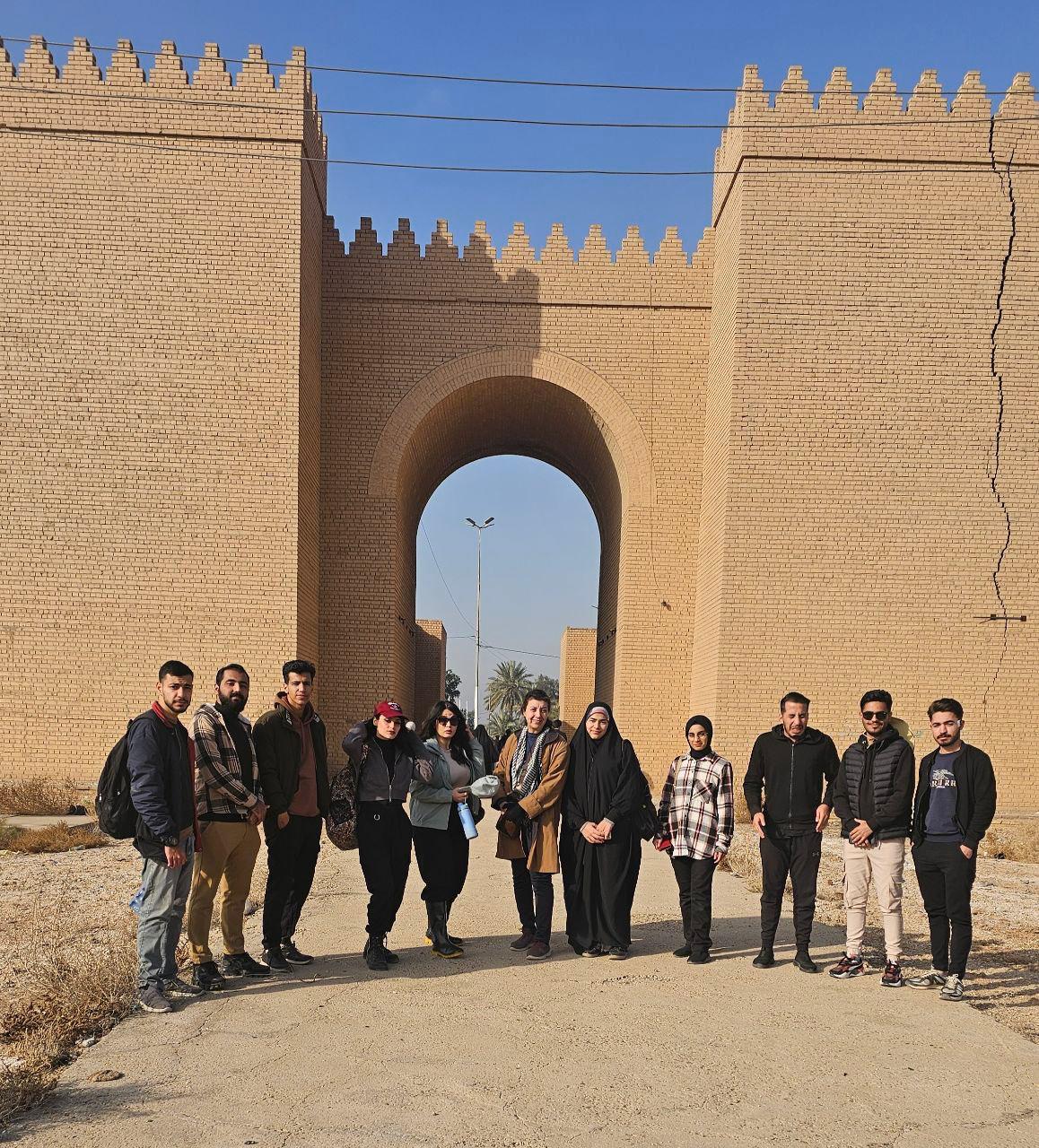Visitors: 25375194 Views
Done By: Engineering Architectural Department
Post Date: 2025-02-15
Last Browse: 2025-07-03

Under the sponsorship
and support of the Dean of the
College of Engineering and the Head
of the Department of Architecture, and in line with fostering scientific
and practical knowledge and in alignment with the growing interest in Mesopotamian architectural heritage as
a testament to the depth of civilization in Iraq, the Department of Architecture at Al-Nahrain University, in
collaboration with the University of
Cagliari in Italy and the Department
of Architecture at the University of Karbala, organized the second workshop on "Sustainability of
Earthen Architecture". This workshop is part of the "Babylon Legacy: Capacity Building in
the Preservation of Traditional Building Craft Knowledge" project,
funded by the Sardinia region in Italy.
The project also involves the World
Monuments Fund, in cooperation with the State Board of Antiquities and Heritage, as part of ongoing efforts
to develop and preserve the Babylon
archaeological site under the "Future
of Babylon" project. Held from February
11–13, 2025, the workshop featured hands-on
practical training supported by theoretical
insights into mud construction
techniques at the Babylon
archaeological site. These sessions were conducted by specialized trainers
from the University of Cagliari and the
International Center for Earthen Construction (CRA terre). Students had an
in-depth opportunity to observe restoration and conservation works,
particularly at the Temple of Ninmakh,
and received training in mud
construction techniques as a traditional building material. The program
also included a visit to the archaeological sites of the ancient city of Kish and the
Borsippa Ziggurat, providing insights into their historical architectural
and constructional features. This collaborative initiative offers significant benefits by
expanding students' practical and
applied knowledge, allowing them to explore the potential of mud architecture and its critical role in conservation and restoration at
archaeological sites. Furthermore, it underscores the importance of sustainable community architecture while fostering a
deeper appreciation for Mesopotamian
civilization through direct engagement at the iconic Babylon heritage site. The educational outcomes of this activity contribute to key Engineering Graduate Outcomes (GOs),
including: The ability to conduct tests, analyze data, and draw scientific
conclusions(GO3), Strengthening teamwork principles, ethics, and skills among
students (GO7), and enhancing social interaction, communication skills, and the
ability to express ideas (GO4). Program of the Workshop 11 February, h. 9:00-13:00
Building with earth - theory 12 February, h. 9:00-14:00
Earthen plasters 13 February h. 9:00-14:00
Rammed earth Coordinators: Maddalena Achenza (Italy),
Prof. Arch., ICOMOS-ISCEAH President, University of Cagliari Saba Sami Al Ali, PhD.
Professor Al-Nahrain University , Baghdad Haider Naji Atya, Ph D.
Lecturer Karbala University Teachers: Maddalena Achenza Jean-Marie Le Tiec (France),
Architect, Craterre AE&CC Patricia Marchante
(Portugal), Architect, University of Cagliari Miguel Ferreira Mendes
(Portugal), Architect, Craterre AE&CC Tutors: Alice Agus (Italy), Architect Ammar Al Taee (Iraq),
Archaeologist, SBAH Students From Al Nahrain
University: Tuqa Jamal, Hussain Merhej, Alaq Abdul Razzaq, Mohammed
Kareem,Abdullah Ali, Hajer Mohammed, Tabarek Fadhil, Muammal Riadh, Ali Jafar,
Hussain Naji. Students From Karbala
University: Nabaa Mehdi Abdul Ridha, Fatima Faez Kadhum, Ahmed Mudhar
Abdul Zahra, Noor Mushtak Kadhum,Rabab Haider Ali,
Project funded by the Autonomous Region of Sardinia with
funds L.R.19/96 for international cooperation